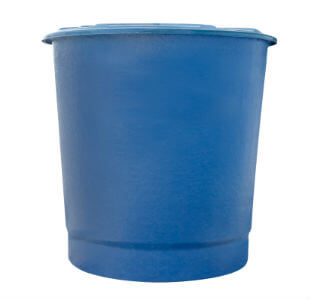Fibre Glass Tanks
Water tanks are large containers which are used to hold excess water for various uses like irrigation, fire suppression, drinking water supply, chemical manufacturing or even food preparation. Water tanks are made up of different materials each useful for a different reason from the other.

The most common materials used to manufacture tanks are:
- Concrete
- Steel Tanks also known as Aquaplate
- Plastic or Polyethylene
- Fibreglass
Important facts about fibreglass:
- Price: A typical round fibreglass tank costs the same price as a plastic tank however if the tank was to be custom-made, it would be a lot more expensive and harder to find.
- Life span of the material: Fibreglass as a material has a lot of benefits over some of the other materials. Some of them include; it is lightweight, has a high resistance to heat, rust and chemical corrosion. They are also unaffected by UV radiation compared to plastic tanks so are able to stand out in direct sunlight for much longer. The only downside is due to the glass fibres, they tend to allow in more sunlight into the tank which results in algae growth. Fibreglass are also relatively easy to move around as they are rigid but have thin walls. They tend to crack easily but the repairs are also equally easy.
- Shapes and sizes available: The Australian market does not have a wide range of fibreglass tanks compared to steel and plastic ones. Due to this reason, it is hard to find slimline and other size options.
- Quality of water: Fibreglass tanks are composed of a food-grade coating on their inner walls and are usually made with the intent of not allowing light to enter. The interior coating should be cured before the tank is sold to customers. This is to prevent the chemicals from reacting with the water.
- Environment safety issues: As fibreglass is a compound, it is unfortunately not recyclable and will likely end up as landfill. They contain small amounts of toxic materials and polyester resin which are then released into the atmosphere once the material starts to disintegrate in the landfill. However, it is suggested that unused fibreglass tanks be put to good use like using them to store old items or other belongings. It is important that old tanks are adequately repaired before being used again to prevent the structure from cracking.
- Preparing the site prior to installation: Prior to installing the fibreglass tanks, it’s a good idea to prepare the installation site with compact packing sand. However if your site has fixed plumbing and other large tanks, a reinforced concrete base might be a better option to avoid ground movement.
All our fibreglass tanks are manufactured using only strict quality control measures so you can rest assured that you will receive only high quality products from us.
Contact us!
Our company is made up of a diverse range of highly trained individuals whose main aim is to ensure our customers are satisfied with their products. If you would like more information on fibreglass tanks or would like to make an order then contact us either by visiting our website or calling us on 0425 260 841. One of our friendly team members will be sure to help you out with your query.
